The crumbling glory of Sheikhupura Fort

The Sheikhupura Fort was built during the reign of the Mughal Emperor Jahangir. Although, there is no conclusive evidence supporting this, the Tuzuk-i-Jahangiri(Autobiography of Jahangir) mentions that the Emperor assigned the job of constructing the Fort to Sikandar Moeen on his hunting trip to Hiran Minar in 1607AD.
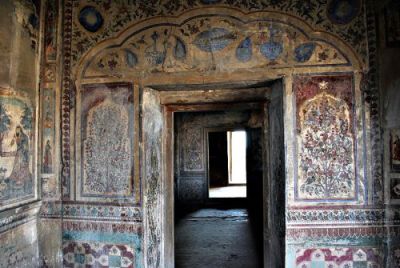
Politically, this fort emerged during the consolidation of Sikh Raj in Punjab. According to Ihsan H. Nadiem, a veteran archeologist and historian, before the Sikhs took over power, Sheikhupura Fort served as a hiding place for bandits looting the countryside.
The Durrani king Shah Zaman, during his invasion of Lahore in 1797, besieged the fort only to purge it of the robbers.

Soon after his departure, the fort was occupied by a dacoit named Inder Singh. Later, Lehna Singhan, an ally of Ranjit Singh invaded the fort and sentenced Inder Singh to death. After him, the fort passed on to the ownership of Bhai Singh.
However, after changing a few more hands, it was in the possession of Sahib Singh and Sahai Singh in 1808 when Ranjit Singh’s forces marched upon it and caused its surrender.
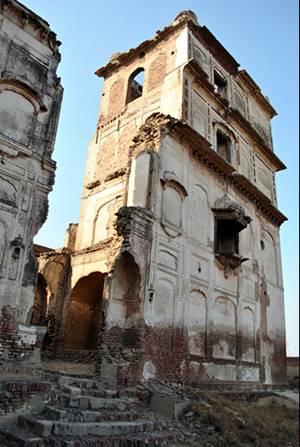
Maharaja Ranjit Singh granted this fort as “Jagir” to his wife Datar Kaur (died in1838) also known as Raj Kaur or Mai Nakkain, the mother of the crown prince Kharak Singh. She lived here up to her last day.
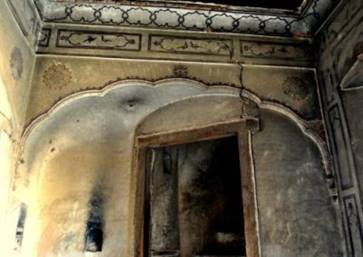
Datar Kaur of course had a considerable role in rehabilitation of this small, strategically less important and almost abandoned citadel. In it, she built a wonderful haveli adorned with classical fresco.
The distinctive Kangra style found in the parlour and in the two chambers on the first floor of this mansion is attributed to the good taste of Kaur.
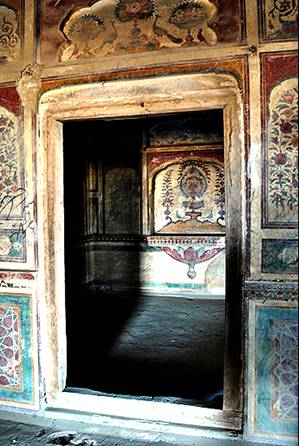
In mid 19th century when power turned to the British, the fort of Sheikhupura was used for the 'house arrest' of Maharaja’s last queen, Rani Jindan the mother of Maharaja Duleep Singh.
In his letter, dated 9th August 1847, Sir Henry Montgomery Lawrence, the Resident of British government in Punjab, had suggested to the Governor General that her highness be banished from Punjab.
On his recommendation the young Maharaja Duleep Singh was sent away to the Shalimar Garden from the palace in the Lahore Fort and the Maharani was imprisoned at Sheikhupura fort.
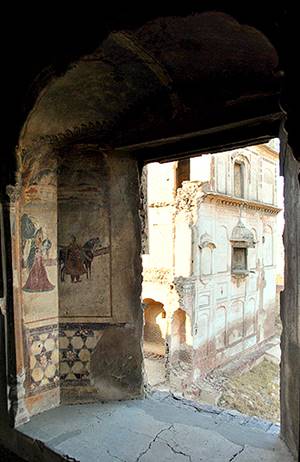
Soon after her arrival at the fort, the Maharani wrote the following letter to the Resident at Lahore for being so ruthlessly separated from her young son (Maharaja Duleep Singh) who was only nine at the time:
With the Grace of the Great Guru
From Bibi Sahib to Lawrence Sahib,
We have arrived safely at Sheikhupura; you should send our luggage with care, as I was sitting in the Samman (Burj-Palace in Lahore Fort) in the same way I am in Sheikhupura. Both the places are same to me; you have been very cruel to me.
You have snatched my son from me…In the name of the God you worship and in the name of the king whose salt you eat, restore my son to me. I cannot bear the pain of this separation…..I shall reside in Sheikhupura. I shall not go to Lahore. Send my son to me. I will come to you at Lahore only during the days when you hold darbar.
On that day I will send him. A great deal (of injustice) has been done to me. A great deal (of injustice) has been done to my son also. You have accepted what other people have said. Put an end to it now. Too much has been done.
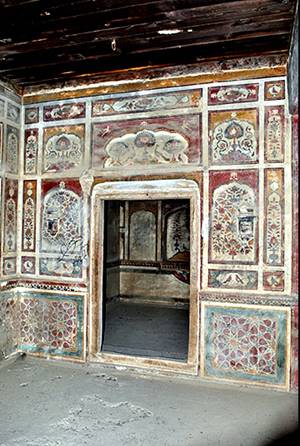
The Maharani was removed from the fort on the afternoon of 15 May 1848, to spend rest of her life in exile in Nepal and in London thereafter. The kingdom of her husband and son had been taken by the British Empire during her ten-month 'house arrest' at the Sheikhupura Fort.
The strong impact of this fort on the political history of Punjab as well as over all India and even neighboring Afghanistan can be judged by the fact that the Sikh Empire played a considerable role in institutionalisation and defense on western border of India, which played decisive role in normalisation of affairs up to Delhi.
An established Sikh state, at its peak, had extended from Tibet in the east to the Khyber Pass in west to Kashmir in the north and to Sindh in the south. In late 40s of 19th century this state, however, collapsed to the arms of British rule, mainly due to its institutional failure and indiscipline in ranks.
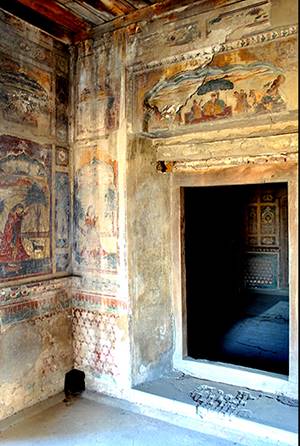
During British rule, this fort was used as an administrative headquarters of Gujranwala district from 1849 to 1851. However, on transfer of the district headquarters to Gujranwala town it was left to serve for some time as a military outpost. After the split of administration in 1918 a new district was created in Sheikhupura. The fort then housed the police headquarters of newly created district.
After partition of India in 1947 it was briefly used by the immigrants from Indian Punjab and later by encroachers, from whom it came to the possession of the Department of Archaeology, Pakistan, in 1967.

No signs of Mughal-era architecture are now visible in this fort except the main entrance façade. To date the only such structure, although dilapidated, in this premises is a six-storey haveli of Datar Kaur, identical to the haveli of Naunihal Singh, situated inside Mori Gate Lahore.
The most vibrant aspect of this haveli is its fresco, now that the precious wooden doors, windows and roof from some parts have been whisked away, turning the historical haveli into a haunted house.
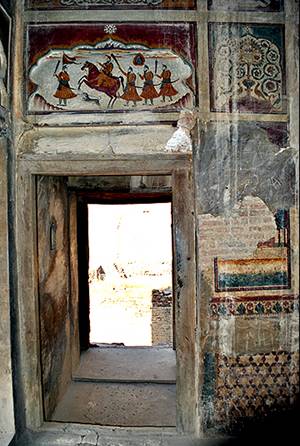
Amid the ruins and inside the rooms, now occupied by bats, we can still find signs of the great era of the past through colorful and thematic paintings and art work in Kangra style. Fresco art work of the haveli of Raj Kaur portrays almost all aspect of life from worship to human feelings.
Although the colors are still vivid, the haveli has now reached the edge of its physical life. Thanks to the Punjab Archeology Department, a few months ago I had the chance to visit Sheikhupura Fort again which is now closed to the public due to its endangered structural condition.
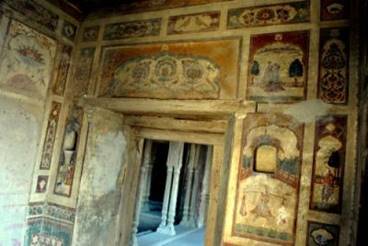
Sadly, the once great monument is now littered with graffiti and left vandalised by the ignorant trespassers. I again took the risk to visit haveli as I was drawn naturally to the fresco. In any case, there is nothing left to be to see over there anymore.
A US-sponsored preservation project could not materialise because of a tussle between the federal and provincial departments of archeology. But it was a shock to see more paintings spoiled than my previous visit.